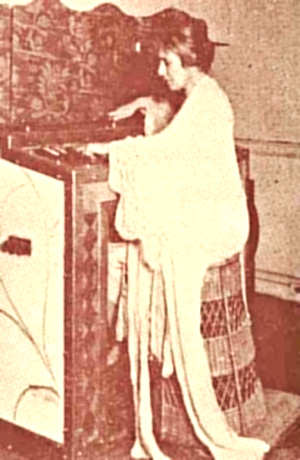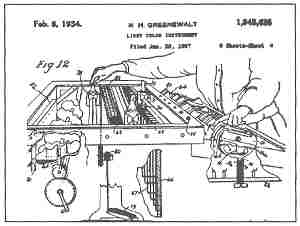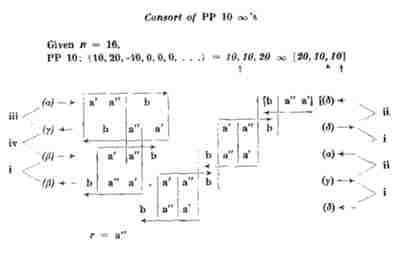Collecting Delaware Books
Two Unusual Books
Contents
Nourathar


Nourathar is the title of a striking and unusual book by Delawarean Mary Hallock Greenwalt, published in 1946. It is also the name she coined for a new art form.
Greenwalt, whose address was Hotel du Pont, said there were only five fine arts until her invention — music, poetry, painting, sculpture, and architecture. To these she added nourathar, a changing and pulsating show of colored lights. It was performed on a console called a sarabet, named for her mother Sara, which controlled batteries of lights and dimmers.
The light show could be produced for its own sake or combined with music, poetry, dance, or even pantomime. Mrs. Greenwalt performed at least once in a church, striving for purely religious effect.
The nicely bound book includes 412 pages. It is dedicated to her son, Crawford, who would become Dupont president and chairman and important in creation of the atom bomb.
The description of the art is couched in the most enthusiastic and flowery of prose. The technical descriptions of the equipment, style of performance, and notation system are in great detail and profusely illustrated, often with patent drawings. The book represents the culmination of her work between 1916 and 1934. Their design represents the state of the art for electrical controls in the 1930s and 40s. She held at least ten patents for her devices and apparently fought one infringement by General Electric.
Greenwalt was born in Beirut in what is now Lebanon in 1871 of American parents. She studied piano at the Philadelphia Conservatory of Music and in Vienna. She performed as a soloist with both the Philadelphia and Pittsburg Symphonies.
The book is regularly rediscovered by musicians trying to achieve the same ends.
Counterpoint and Symbol
Poet James Whaler was born in Wilmington in 1889 and died there in 1931. The Late Fall issue of Dreamstreets (Newark DE) has an article on his life by Steven Leech.
He wrote two well-received books of poetry —
- Hale's Pond and Other Poems, published by Harold Vinal, New York, 1927.
- Green River, a Poem for Rafinesque, published by Harcourt, Brace and Company, New York, in 1931. 153 pp. This long poem recounts the life of Sicilian-American naturalist Constantine Rafinesque who died in 1840. It is considered by some to be "green poetry" or eco-poetry.

of Milton's poetic style
Both are available in the used book market, usually for $100 or more, however they appear to be totally unrepresented in Delaware libraries.
Whaler's truly unusual book is not poetry. Instead, it is a highly mathematical and difficult to understand analysis of John Milton's poetry titled Conterpoint and Symbol: An inquiry into the Rhythm of Milton's Epic Style. It was first published in wraps as Volume VI of the series Anglistica in Copenhagen in 1956 and later in hardback. There are 226 pages of mathematical diagrams and discussions of numerical progressions explaining individual paragraphs of Milton's works.